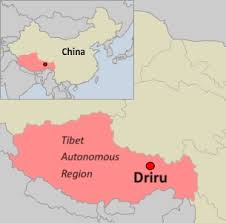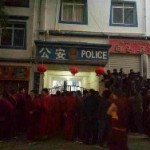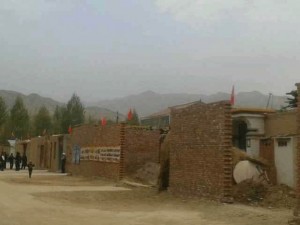The county of Driru has now been placed under additional Chinese surveillance. A new notification to various “convenience police posts” in Lhasa and Nagchu has asked officers to monitor the whereabouts of all Nagchu Tibetans. According to Human Rights Watch, there are 676 “convenience police check points” in the Tibetan Autonomous Region (as of July 2012). Officers man these around the clock. The notification seeks to place Nagchu Tibetans in Lhasa under twenty-four hour police surveillance, to make it easier to arrest potential “trouble makers”.
According to the notification, information about Nagchu Tibetans is to be passed from checkpoint to checkpoint via code. The code for Driru is ‘A’, Suo county ‘B’ and Bachen county ‘C’. The secret code for male Nagchu Tibetans is “male tourists” and female Nagchu Tibetans is “female tourists”. To quote from a rough translation of the official Chinese notification, obtained by the Tibetan Centre for Human Rights and Democracy:
“How to Send Secret Codes: For instance, if convenience police station no. 89 learns that three male individuals from Driru County have entered the area under convenience police station no. 91, police station no. 89 must relay this information to station no. 91 through mobile handsets by saying: ‘Station No. 91, three male tourists from “A” have entered your area, please extend hospitality!’ “
The notification was issued just days after Chinese officials fired into an unarmed group of protesters who were demanding the release of Dorje Draksel who was arrested as one of the leaders of the unrest in Driru. More than sixty people were wounded, some critically. Amnesty International has condemned the shoot out. “It is outrageous for the police to start firing on a peaceful gathering,” says Corinna Barbara Francis, Amnesty International’s China Researcher.
More arrests have been made. Tsuiltrim Gyaltsen, a Tibetan writer, and Yougyal, a former police officer have been taken into custody on charges of “disturbing the social stability” and engaging in “splittist activities”. Tsuiltrim is known for teaching Tibetan, Tibetan poetry and Chinese to children in his village, as well as co-authoring mirap sarpa. Yougyal is a father of two and it is believed he quit the police force after seven years because it involved too much politics. A Tibetan monk, Kalsang Choedar, from Palyul monastery in Palyul county, has also been arrested in relation to the unrest in Driru, allegedly for giving information about the recent crackdown to exile “separatists”.
A Tibetan woman, Kelsang, a mother of three, has been arrested. She lives in theTsala township in Driru, and was arrested on October 11 for “talking things”, keeping a banned picture of his Holiness the Dalai Lama, and having Tibetan songs on WeChatt, a mobile social networking app. Police refuse to reveal her whereabouts to her family members.
The conflict began when villagers of Mowa village refused to place the Chinese flag on their rooftops, a space traditionally reserved for sacred Tibetan Buddhist flags. In protest, they threw the Chinese flags into a nearby river. To date, four Tibetans have been confirmed dead in the ongoing protests in the area.
The unrest has now spread. Tibetans in Chentsa county in the Malho Tibetan Autonomous Prefecture have followed in Driru’s footsteps and refused to fly the Chinese flag. So far, only fifteen families out of three hundred have complied and flown the Chinese flag. “I don’t know when the rest of our homes will be forced to put up with this,” Radio Free Asia quotes a Tibetan as saying, “As for myself, I will never raise the flag. Even if it means my death.”










 Print
Print Email
Email